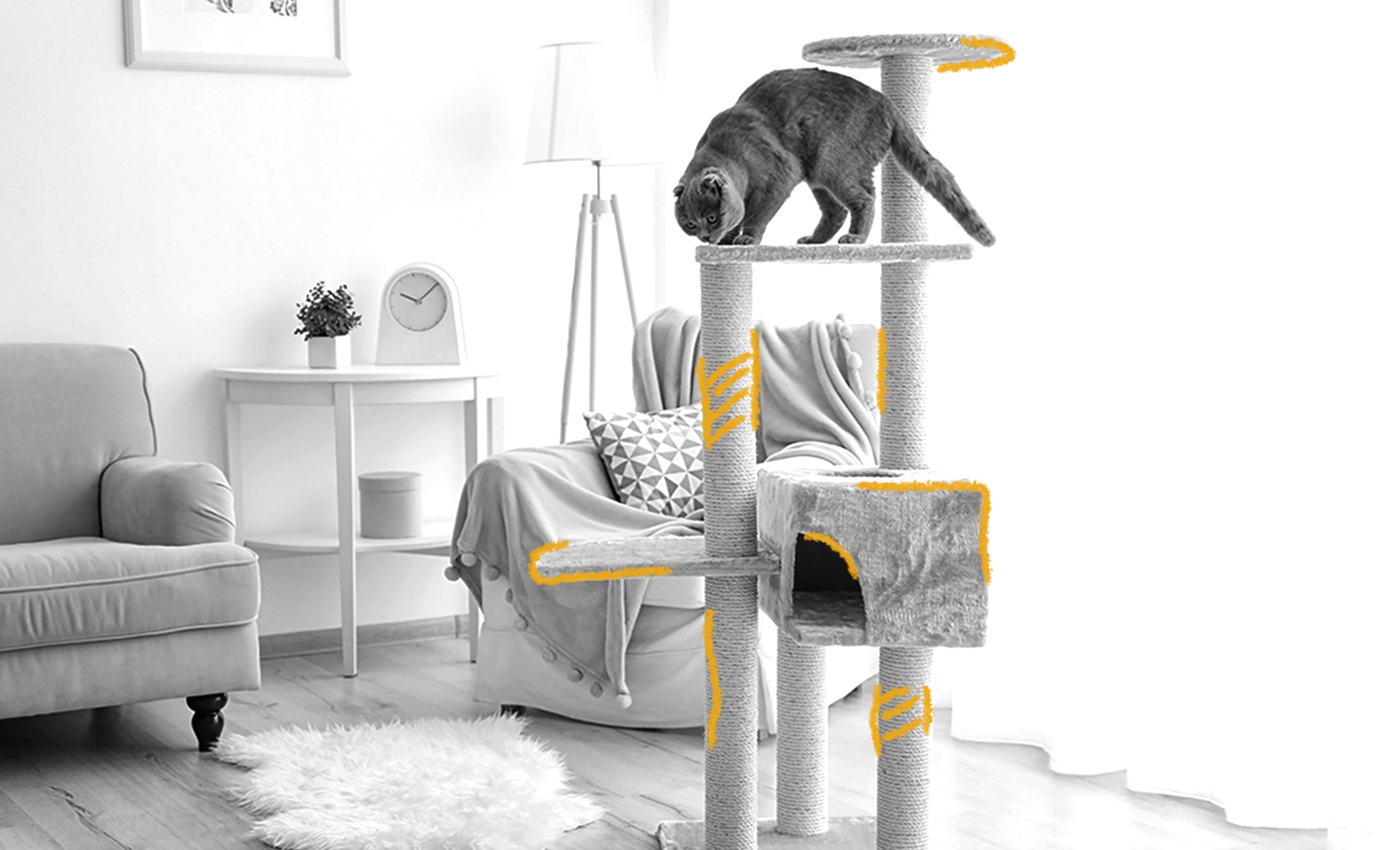The cat tree was patented in 1968 by a Los Angeles man named Frank Crow. In his patent application, Crow noted that his invention was intended to solve a problem faced by most indoor cat owners, namely, that cats like to climb. This sets it apart from many other 1960s creations that were more about form than function, such as the lava lamp or the beanbag chair. Because the fact is, house cats don’t just like to climb — they are descended from tree-dwelling big cats like cougars and therefore have an instinctive urge to climb things. Crow’s cat tree was designed to allow them to climb to their heart’s content without doing damage to household items like drapes or shelving. The classic cat tee is usually a few “stories” high and is wrapped in beige carpeting that cats can easily grip with their claws. However, in modern times, there are many more aesthetically pleasing cat trees on the market. For example, Mike and Corrine Carson of Paw Friendly Cat Furniture create cat trees made from reclaimed elm branches that are eco-friendly, pleasing to the eye, and more satisfying for cats, as the wood doesn’t degrade under a cat’s claws nearly as quickly as carpeting does. Today, cat trees are a staple in most homes that have one or more cats, and both the cats and their human caregivers appreciate this humble object’s usefulness.

Your go-to guide for weird history facts
Subscribe to the FREE daily email that makes learning about history fun.


